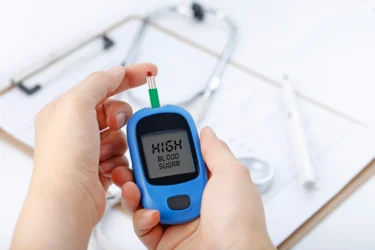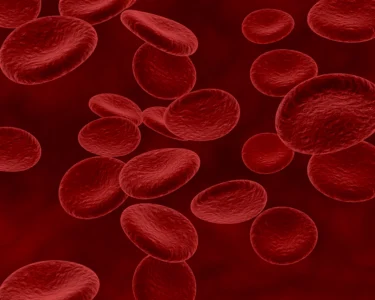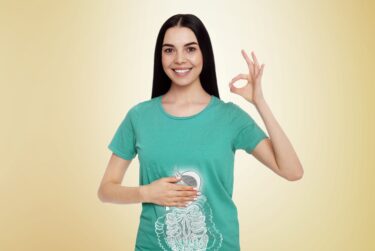Moong Dal: Uses, Benefits, Side Effects and More!
By Dr Ashok Pal +2 more

Get,

to manage your symptom
Get your,


4 Cr+ families
benefitted

OTP sent to 9988776655



You’ve successfully subscribed to receive
doctor-approved tips on
Whatsapp

Get ready to feel your best.

Hi There,
Download the PharmEasy App now!!


Register to Avail the Offer
Send OTPBy continuing, you agree with our Privacy Policy and Terms and Conditions

Hi There,
Sign up on PharmEasy now!!
Trusted by 4 crore+ families

OTP sent to 9988776655



You have unlocked 25% off on medicines




Code: NU25
By Dr Ashok Pal +2 more
Table of Contents
Legume seeds are referred to as ‘poor man’s meat’ and rightly so. They are an excellent source of proteins, bioactive compounds, minerals and vitamins. The mung bean (Vigna radiata), commonly referred to as Moong dal in India, is one of the most important edible legume crops. It is cultivated and consumed mainly in Asian countries like China, Bangladesh, Pakistan, India and some Southeast Asian countries. It is also grown in the dry regions of Europe and warmer parts of Canada and the United States1. It contains a balanced amount of nutrients, and its combination with cereals has been recommended to increase the quality of protein1. In the Chinese book Ben Cao Qui Zen, it is stated to be beneficial for digestive upset and skin moisturisation2.

Moong dal is rich in high-quality proteins with high digestibility and is an excellent source of carbohydrates, vitamins, minerals, fibre, and essential fatty acids. Below are the nutrient value of moong dal in percentage content:
The presence of bioactive compounds, macro and micronutrients may be responsible for the potential properties that Moong dal might exhibit, some of which are listed below:
I would suggest moong dal if you’re looking for an affordable and vegetarian-friendly source of protein. Not only is it cost-effective, but it’s also packed with protein goodness. What’s even better is its protein quality might be easy on your tummy, making it easy to digest compared to other legumes6.
Dr. Rajeev Singh, BAMS

Moong dal being nutrient-rich, might show effects against various microorganisms, including bacteria, fungi and viruses.Various studies have shown that Moong dal might have a potential effect against many species of bacteria and this property of it is comparable to Erythromycin, a commonly used antibiotic4. It has also shown activity against Helicobacter pylori, a bacteria causing stomach infections2.
Its possible effectiveness against fungal infections is comparable to that of Fluconazole, a drug which is commonly used to treat a fungal infection called candidiasis4. One of the researches also showed that Mung Bean Sprouts from Moong dal might be helpful as an antiviral and prophylactic agent against Respiratory Syncytial virus and Herpes Simplex virus infections4. However, more studies are required and a doctor should be consulted for infections.
I recently came across a study on the antioxidant properties of moong dal soup. According to studies, it might actually help in heat stress injuries! How cool is that? Animal studies show that it may protect from oxidative stress, which is linked to various diseases. However, it’s important to note that more human studies are needed to confirm these exciting claims5.
Dr. Siddharth Gupta, B.A.M.S, M.D (Ayu)

Moong dal might help to lower blood glucose levels by apparently decreasing the absorption of glucose from the small intestines. A study showed that green gram flour, i.e. Moong dal flour might help in the control of blood sugar levels. Another study4 was conducted by Lou et al. in 2016, which clearly explained that the presence of certain phenolic compounds might be what helps moong dal lower blood sugar levels. There is a requirement for more studies in this area. Therefore, you should consult a doctor for the diagnosis and treatment of diabetes as it is a serious condition.

Studies have revealed that moong dal might inhibit the action of an enzyme which is responsible for increase of the blood pressure, thus, potentially helping lower blood pressure4. Researchers have found that high amounts of raw sprout extracts, dried sprout extracts, and enzyme digested sprout extracts might help in the lowering of blood pressure2. It was also found that dried sprout powder might not be as effective as sprout extracts2. However, more studies are required. You should consult a doctor for serious conditions like high blood pressure (known as hypertension), which should be diagnosed and treated by a doctor.

Moong dal might help in lowering the level of lipids and cholesterol in the body4. It might also help in the production of enzymes that might regulate the cholesterol levels of the blood4. This cholesterol-lowering effect of moong dal might be similar to Vitamin E4. However, more studies are required to prove such claims. Moreover, a doctor should be consulted for the diagnosis and treatment of high cholesterol.

Researchers have found that the active components present in moong dal might have a potential to help with various cancer types like breast cancer, digestive system cancers and leukaemia (blood cancer)1. A protein called Vicilin, which is isolated from moong dal, might have a potential to stop the cells responsible for breast cancer from growing. Also, it was seen in a study that fermented moong dal might help to stop tumour development and might help enhance the production of compounds that might help with cancer, thus, it might have anti-cancer properties4. However, more studies are required to prove the above-stated claims. Cancer is a serious condition and must be diagnosed and treated only by a doctor. Kindly ensure that you consult a doctor.

Moong dal might act as a prebiotic (food that helps in the growth of good bacteria in the small intestine) and thus might help to maintain a healthy digestive system4. The presence of indigestible food ingredients like dietary fibre and oligosaccharides (type of carbohydrates) might impart prebiotic properties to it and may be helpful for the gut health, constipation, development of cholesterol and obesity, and might reduce the chances of heart diseases4. However, such claims need more research ass proof.
A probiotic yoghurt was developed by supplementing yoghurt with green gram (moong dal), oats, barley and quinoa, using a good bacteria (Lactobacillus rhamnosus GR-1) in a study4. Researchers have found that fermentation of moong dal with Lactobacillus strain might help improve the protein content and digestibility of the protein4. However, more studies are required to prove these potential uses of moong dal. Therefore, you should consult a doctor before using moong dal for human health.
Let me tell you a fun fact. Did you know that moong dal not only provides nutrition but also has a long history of use as traditional Chinese medicine? According to the famous Chinese pharmacopoeia called the ‘Bencao Gangmu,’ they have been recognised for their detoxifying properties, potential ability to boost mental well-being, and even their power to help with heat stroke and digestive issues7.
Dr. Smita Barode, B.A.M.S, M.S.

It might have a potential as a skin lightening agent and may interfere with the formation of a pigment called melanin which imparts a darker tinge to the skin4. It might also have a moisturising effect on the skin and has been used traditionally as a home remedy for obtaining glowing skin2. However, you should not use it without consulting a doctor. There is more research required to ascertain the potential uses of moong dal for skin.

Moong dal might help effect the unwanted enlargement of fat cells in the liver and may not allow the accumulation of fat in it, thus it might help with fatty liver (hepatic steatosis)4. Moong dal might also have an effect on the immune system of the body and might help reduce an unnecessary activation of it. This activity might be helpful for many diseases related to the immune system and also might also reduce inflammation1.
The potential antioxidant activity of moong dal might be seen to be prominent in its seeds, sprouts and hulls. It might act as a scavenger for free radicals (unstable molecules in the body), which are harmful to the cells of the body and it may neutralise them4. It may be a good dietary supplement and be helpful for the diseases caused by the accumulation of free radicals like cancer, diabetes, heart diseases, etc.)4. Among the different varieties, the highest antioxidant activity might be shown by the Pattu variety of green gram, which has high phenolic content4. However, more research is required for proving such claims.
Though there are studies that show the potential use of moong dal in various conditions, but these are insufficient and there is a need of further studies to establish the true extent of benefits of moong dal on human health.
Also Read: Masoor Dal- Uses, Benefits & Nutritional Value
Moong dal can be incorporated into our diet and consumed in various forms like:
Studies have also revealed that soaking moong dal before use might increase the availability of its nutrients and might facilitate nutrition utilisation by the body. So soaking the dal before you start cooking might be good for your health too4. However, more research is required for to prove the use of moong dal for human health.
You must consult a qualified doctor before taking any herbal supplements. Do not discontinue or replace an ongoing treatment of modern medicine with an ayurvedic/herbal preparation without consulting a qualified doctor.
Moong dal might have unknown side effects. There is a requirement for more studies on the side effects of moon dal. Kindly do not use it to self-medicate, alter, replace or discontinue any ongoing treatment. Please consult a doctor.
It is advised to consult an Ayurvedic physician regarding specific usage of Moong dal for medicinal purposes. General precautions should be taken before using moong dal, especially by pregnant and nursing women, elderly individuals and children. Kindly do not self-medicate.
Also Read: 16 Simple Home Remedies for Glowing Skin!
Moong dal might interact with other drugs. However, more research is required for studying the adverse drug reactions of moong dal. Please do not self-medicate and ensure that you consult a doctor. One should always disclose all the current medications being used to the doctor so that they can assess the situation and further give sound medical advice.
Also Read: Arogyavardhini Vati: Uses, Benefits, Side Effects & More!
Moong dal can be consumed as a vegetable, soaked and sprouted, used in salads, boiled, fried, used as a paste etc4.
Moong dal might help to reduce blood pressure by potentially inhibiting the action of an enzyme which might cause high blood pressure4. However, more research is required to prove the possible effects of moong dl on blood pressure. Kindly consult a doctor as serious conditions such as high blood pressure should be diagnosed and treated by a doctor.
Moong dal might have potential use for moisturising the skin2. However, more research is required. Please consult a doctor before applying anything on your skin.
There is no evidence stating the benefits of Moong dal for hair.
Moong dal might act as a probiotic and might be helpful for gut health, constipation and might help the growth of good bacteria4. However, there is a need for more research. Kindly do not self-medicate, always consult a doctor.
1. Hou D, Yousaf L, Xue Y, Hu J, Wu J, Hu X, et al. Mung bean (Vigna radiata L.): Bioactive polyphenols, polysaccharides, peptides, and health benefits. Nutrients. 2019;11(6):1–28. Available from: https://www.ncbi.nlm.nih.gov/pmc/articles/PMC6627095/
2. Tang D, Dong Y, Ren H, Li L, He C. A review of phytochemistry, metabolite changes, and medicinal uses of the common food mung bean and its sprouts (Vigna radiata). Chem Cent J. 2014;8(1):1–9. Available from: https://www.ncbi.nlm.nih.gov/pmc/articles/PMC3899625/
3. Central F. [ HISTORICAL RECORD ]: MOONG DAL , SPLIT MOONG. 2019;9(c):12–5. Available from: https://fdc.nal.usda.gov/fdc-app.html#/food-details/445233/nutrients
4. Mekkara nikarthil Sudhakaran S, Bukkan DS. A review on nutritional composition, antinutritional components and health benefits of green gram (Vigna radiata (L.) Wilczek). J Food Biochem. 2021;45(6):1–19. Available from: https://onlinelibrary.wiley.com/doi/abs/10.1111/jfbc.13743
5. Cao D, Li H, Yi J, Zhang J, Che H, Cao J, Yang L, Zhu C, Jiang W. Antioxidant properties of the mung bean flavonoids on alleviating heat stress. PLoS One. 2011;6(6):e21071. doi: 10.1371/journal.pone.0021071. Epub 2011 Jun 10. PMID: 21695166; PMCID: PMC3112222. Available from: https://pubmed.ncbi.nlm.nih.gov/21695166/
6. Hou D, Yousaf L, Xue Y, Hu J, Wu J, Hu X, Feng N, Shen Q. Mung Bean (Vigna radiata L.): Bioactive Polyphenols, Polysaccharides, Peptides, and Health Benefits. Nutrients. 2019 May 31;11(6):1238. doi: 10.3390/nu11061238. PMID: 31159173; PMCID: PMC6627095. Available from: https://pmc.ncbi.nlm.nih.gov/articles/PMC6627095/
7. Hou D, Yousaf L, Xue Y, Hu J, Wu J, Hu X, Feng N, Shen Q. Mung Bean (Vigna radiata L.): Bioactive Polyphenols, Polysaccharides, Peptides, and Health Benefits. Nutrients. 2019 May 31;11(6):1238. doi: 10.3390/nu11061238. PMID: 31159173; PMCID: PMC6627095. Available from: https://pmc.ncbi.nlm.nih.gov/articles/PMC6627095/
Disclaimer: The information provided here is for educational/awareness purposes only and is not intended to be a substitute for medical treatment by a healthcare professional and should not be relied upon to diagnose or treat any medical condition. The reader should consult a registered medical practitioner to determine the appropriateness of the information and before consuming any medication. PharmEasy does not provide any guarantee or warranty (express or implied) regarding the accuracy, adequacy, completeness, legality, reliability or usefulness of the information; and disclaims any liability arising thereof.
Links and product recommendations in the information provided here are advertisements of third-party products available on the website. PharmEasy does not make any representation on the accuracy or suitability of such products/services. Advertisements do not influence the editorial decisions or content. The information in this blog is subject to change without notice. The authors and administrators reserve the right to modify, add, or remove content without notification. It is your responsibility to review this disclaimer regularly for any changes.
Comments

Leave your comment...
You may also like
Comments